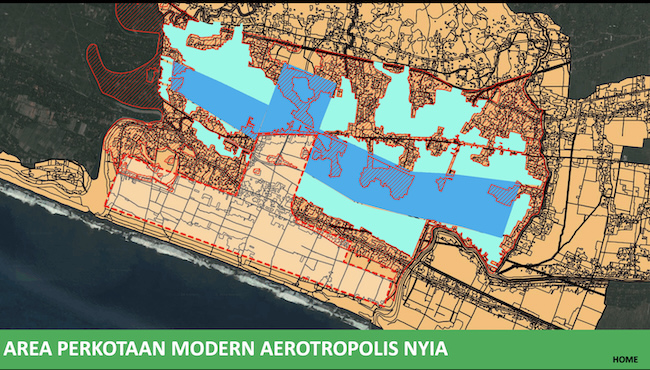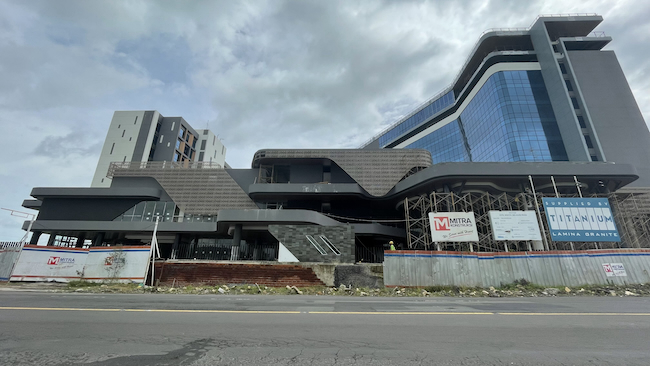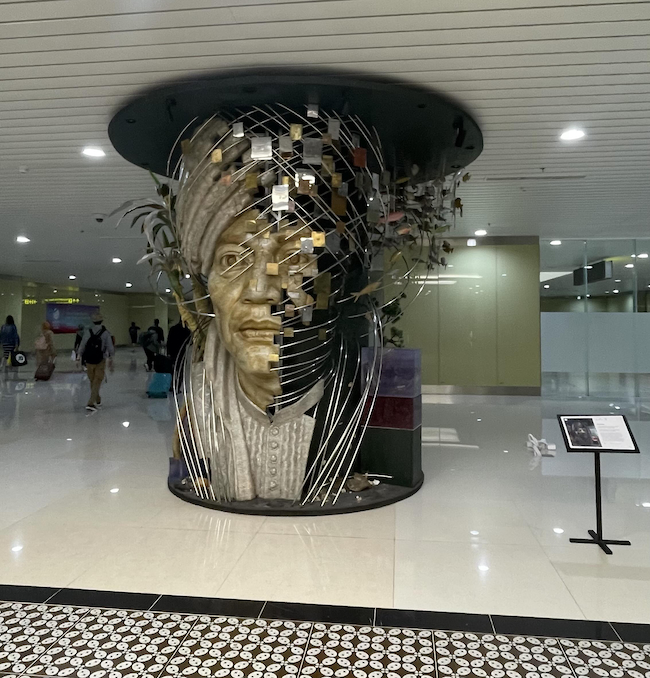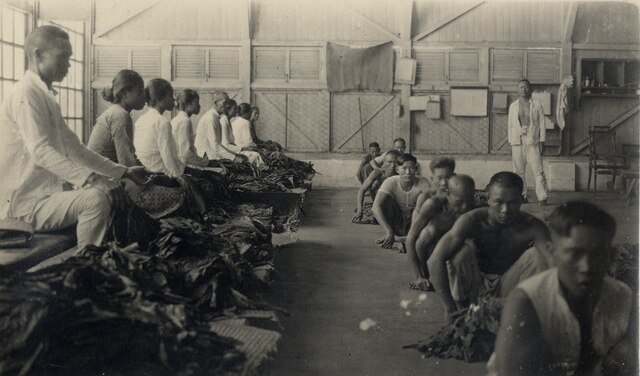Yogyakarta's new international airport and aerotropolis embody national aspirations, but at what cost to the locals it has displaced?
Khidir M Prawirosusanto and Eliesta Handitya
In August 2020, amid COVID-19 and not even a year behind schedule, a new airport to serve the Special Region of Yogyakarta (DIY) Province officially began operations. Yogyakarta International Airport (YIA) replaced Adisutjipto International Airport, the 60-year-old former Dutch military airfield. Located in Temon, a coastal-rural area of Kulon Progo, the airport is approximately a ninety-minute drive southwest of Yogyakarta and sits on 637 hectares of land that was previously home to seven villages.
Beginning in 2009, the DIY government planned to reorient urban development from the northern upland area to its southern coastal lowlands. Anticipating rapid urban growth, the government aimed to develop new centres in in the outlying Kulon Progo and Bantul, both are known asYogyakarta’s least developed districts, with poverty rates of 14.04 per cent in Bantul, and 18.38 per cent in Kulon Progo. These are the highest poverty rates in DIY, and are accompanied by a myriad of social and health problems.
Anthropologists Anand, Gupta, Appel and others have suggested that new infrastructure projects are promises made in the present about the future. By decentralising DIY’s urban areas, the government promised that new infrastructure would reduce socio-economic disparities. It viewed the new airport, and a nearby industrial zone (the ‘aerotropolis’), as a means to create economic opportunities, particularly in tourism and informal sectors.
Several years on, there is little evidence that the airport and aerotropolis zone in Kulon Progo is likely to bring such improvements for those living in the area. The governments, both national and provincial, made promises about YIA’s benefits, but to whom are these benefits flowing?
Planning a (new) international airport
We first heard rumours about a new airport to serve the DIY Province back in 2012. It was no secret that Adisutjipto was unable to keep up with the increasing volume of commercial air traffic. Between 2013 and 2019, air travel increasingly replaced buses and trains as the primary mode of transportation across the country. This shift was driven by the increased number of affordable flights and the expanding middle class in many Southeast Asian countries. The airport’s relatively short runway and limited domestic and international terminal capacity for passengers, made a major upgrade necessary.
By late 2013, the prospect of a new Yogyakarta airport had moved beyond speculation. A Minister of Transportation’s decree designated Temon sub-district in Kulon Progo as the site for the YIA. In 2015 the Yogyakarta Governor also issued a Decree, directly enabling the land acquisition process to go ahead.
Plans can be traced back to 2011, when former President Susilo Bambang Yudhoyono enacted his Masterplan for Acceleration and Expansion of Indonesia’s Economic Development 2011-2025. When Joko Widodo (Jokowi) was elected president in 2014 he announced a similar focus on airports, highways, toll roads, and tourist destinations. He argued that physical infrastructure would encourage Indonesia’s integration into the global market. The YIA project was included in his government’s National Strategic Projects.
Yogyakarta’s was not a unique case. By the end of President Jokowi’s first term in 2019, the government had built fifteen new airports and revitalised 439 old airports and this program continued into his second term. This was despite frequent resistance from locals, scholars, and activists across the country. From Jokowi’s perspective, airport development would modernise Indonesia’s air transport system and civil aviation business and improve global connectivity to boost national and regional economies.

In January 2017 President Jokowi attended the groundbreaking ceremony for YIA in Temon. Governor of DIY Province and the Sultan of Yogyakarta, Sri Sultan Hamengku Buwono X said the project signalled ‘a new beginning of the transition from static traditional to more dynamic modern civilisation, starting from Kulon Progo’.
Contesting claims
But the ceremonies and speeches painted over the objections of residents who were displaced to make room for the new airport. Ownership of the land earmarked for YIA was contested. The government drew on two key laws to attribute ownership to the district’s royal families. When seeking to acquire land for the airport, authorities referred to Special Law 2012 (Undang-Undang Keistimewaan 2012), which ushered in a shift in landownership rights and returned to pre-independence or colonial era conditions, whereby most of the land in DIY province is owned by the Sultanate of Yogyakarta and Pakualaman. The villages in this southern coastal area of Central Java had inherited the land from to the Sultanate of Yogyakarta and the Duchy of Pakualaman. As such, the authorities used a Dutch colonial-era policy regulating land ownership, Rijksblad 1918 number 18, to justify displacing the residents on the grounds that they were mere squatters.
Many of the residents who were earmarked to move resisted, asserting their claim to the land, which they argued did not belong to the airport authority, or the two royal families. Their lives are linked to the nature and culture of the southern coastal area. They feared the airport would bring economic uncertainties. According to a report compiled by groups acting in solidarity with residents opposing the airport development, it has devastated fertile productive agricultural fields that are key for peoples’ livelihoods.
During our interviews with key stakeholders in the conflict, a former General Manager of YIA claimed they took ‘the humanistic approach’ to convince people to leave ‘as fast as possible and in [a] friendly manner.’ But between 2014 and 2017, airport authorities ordered people’s homes be demolished. Evictions were far from friendly: houses were demolished and farmland seized. Media reported approximately 300 resisting residents facing government repression, intimidation and violence.
Enabling the aerotropolis
Following YIA’s construction, the larger plan was to build the aerotropolis – a development centred around the new airport, surrounded by non-aviation infrastructures, an integrated transport system and service facilities, to stimulate business beyond the aviation industry. National, state and regional government budgets would fund its development.

As early as 2005, discussions about Kulon Progo potentially becoming an urban extension of Yogyakarta began to circulate, along with rumors of an 'aerocity'. It was not until 2019 that the aerotropolis zone was mentioned officially, with the DIY Province ‘Spatial Planning of 2019-2039’ document laying out the government's plans to transform Temon and Wates sub-districts in Kulon Progo into an aerotropolis zone.
The international airport and the aerotropolis are just two of the provincial government’s efforts to reorient development under Yogyakarta Special Region Law No. 13/2012. The Sultan's aim is to expand tourism into peri-urban areas such as Bantul, Sleman, Gunung Kidul, and Kulon Progo, to increase regional income and decrease the province’s poverty index.
Designed as Java’s 'city of the future’, YIA’s aerotropolis at Kulon Progo will span 7,000 hectares. In 2019 the Development Planning Board for Kulon Progo announced that the ‘YIA’s aerotropolis would be further widened to cover a radius of 15 kilometres from the airport and would include commercial, logistical and residential centres’. To support the aerotropolis, an inter-regional road and associated infrastructure is due for construction by 2025.
Social and environment impacts
The government viewed the YIA’s aerotropolis as essential for transforming Yogyakarta into a global city poised to attract international investment. But experts warn it is also poised to trigger profound social and environmental change, including loss of livelihoods, noise pollution, and a higher risk of flooding and tsunamis.
An official environmental impact assessment suggested that Bantul and Gunung Kidul would have been better locations for the airport than Kulon Progo. They would have presented lower risk of natural disasters, though would have required displacing more residents. When authorities ultimately chose Kulon Progo to avoid displacing more residents, they were met with significant criticism. Environmental geologists showed that the site selected in Temon was prone to earthquakes, floods and tsunamis. Environmental journalists and scholars in various fields questioned land provision for the airport and other negative environmental impacts. To prevent flooding from the nearby Bogowonto river, which threatens the airport and its runways, the government built a Rp 1.4 trillion embankment.
Air traffic also produces what sonic anthropologist Marina Peterson called ‘atmospheric noise’. The sound study group Ethnosonic, conducted research in Temon. It criticises the displacement of people and plants caused by the rapid development of the new infrastructure, leading to environmental changes that affects human and endangers non-human, lives. Ethnosonic researcher Haratua said the sounds of insects, which usually mark the changing of seasons is now gone.
Despite these significant concerns and opposition YIA’s aerotropolis development continues unabated. In 2023 the Sultan announced plans to organise a task force for the aerotropolis development, which will involve stakeholders from the local community and private sectors, especially in tourism and hospitality.
The aerotropolis zone will cover four sub-districts around the airport. ‘(T)here will be a small city […] that can support [airport] service users and the community. Later, hotels, residences, theme parks, cargo villages, educational facilities, stadiums and others will be built in the aerotropolis zone,’ explained the former YIA General Manager, Agus Pandu Purnama.
Cultural legitimacy for development
From the outset, the Sultan expressed his desire that the YIA project serve as a cultural monument, commemorating one aspect of the Governor’s vision for DIY, ‘the civilisation of the Indian Ocean for the glory and dignity of Yogyakarta’s people’. This is reflected in the design of the airport itself, its permanent exhibits and interiors, which amplify this endeavour to create the future of a modern city through the airport and aerotropolis. Permanent exhibits, or ‘Jogja Renaissance’, include reliefs about the five displaced villages (Palihan, Glagah, Sundutan, Jangkaran and Kebon Rejo), through which the curators attempt to ‘acknowledge the history of the area that has been used for the airport development’. There are doubts about the accuracy of the history being portrayed.

The airport’s architecture, interior design and artwork were also used to represent the city’s culture. As the curator for YIA art programs explained, ‘This airport reflects Jogja with its artworks, interior, architectural elements and hospitality’. The selected works portray how the airport authorities have crystallised the local cosmologies, and agricultural lives of villagers and people's resistance as a ‘past narrative’.
Visitors can ‘walk through the past’ in an air-conditioned, modern building, and move through art installations embedded with cultural narratives and cosmologies of Temon’s rural past. It may seem subtle, but the cultural narratives within the artworks unveiled efforts to project consensus and a common understanding about the future development of the city. At no point in this tour is there an indication to the visitor that any of this comes at the expense of those displaced from their villages to make way for the development.
Aerotropolis, the tangled knots
As Yogyakarta citizens who witnessed and experienced the urban-rural transformation in the city of Yogyakarta and Kulon Progo district, we found it hard to understand the new form of urbanism that such infrustratucture would bring.
The shaping of Yogyakarta’s urban future appears likely to remain a contested issue between the government and its citizens. The ongoing development of the aerotropolis is expected to displace more people, as evidenced by plans for a dam in Wadas village, Purworego, to provide YIA’s water supply. Reports indicate that government officials were accused of intimidating residents into leaving their homes.
Recent socioeconomic dynamics in DIY and Kulon Progo in particular, shows that as the government expends significant resources to create a global city, significant social and economic problems persist. The megaproject is likely to paper over Kulon Progo’s challenges, such as mental health problems, the highest poverty rates in the province, a high number of school dropouts, poor nutrition, low wages, and problems in the agricultural sector as the main industry of the district.
Ultimately, the potential of Kulon Progo’s envisioned future city remains uncertain. Socio-economic inequality and other challenges will not be resolved solely through the development of the airport and aerotropolis. In the end, the promise of YIA’s aerotropolis remains elusive.
Khidir Marsanto Prawirosusanto (k.m.prawirosusanto@uva.nl) is a PhD candidate at the Amsterdam Institute for Social Science Research (AISSR), Department of Anthropology, University of Amsterdam and a junior lecturer at the Department of Anthropology, Universitas Gadjah Mada.
Eliesta Handitya (listahanditya@gmail.com) is an independent researcher and editor with cultural anthropology background. She is also a member of Bakudapan Food Study Group and Struggles for Sovereignty, Yogyakarta.











